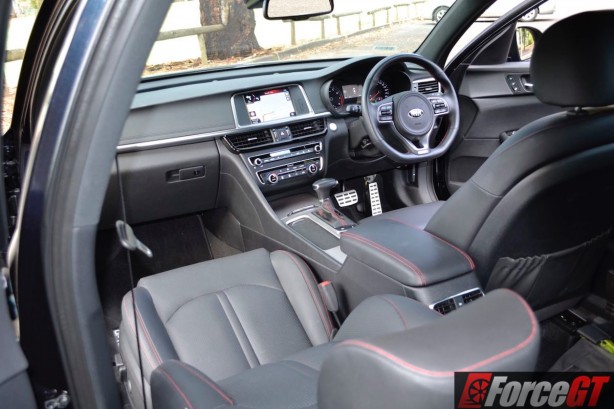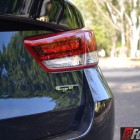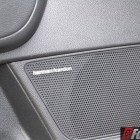The third-generation Kia Optima that made its debut five years ago was a game changer for Kia. It proved the Korean company has come of age and is capable of producing world-class, not to mention stylish vehicles, at a reasonable price.
It had good refinement, plenty of standard equipment and most of all, reliability and industry-leading warranty.
The latest, fourth-generation model burst onto the world stage at the 2015 New York Auto Show. Available as a two model range locally ($34,490 Si and $43,990 GT) each with its own powerplant, they promise to improve upon their forebear. Kia even went as far as describing the all-new models as “another giant step forward”.
On first acquaintance, it’s hard to disagree.
The 2016 Kia Optima has that premium, progressive look that just a few years ago, fuelled Audi’s spectacular rise as a premium carmaker.
It’s also no coincidence they share some styling traits, as Kia’s design head honcho is none other than the now famed, Peter Schreyer, who spent the formative years of his career at Audi.
While the new Optima’s evolutionary design may look familiar, its surfacing detail is more contemporary. There are sharper bodylines and creases, and a more elongated silhouette.
Kia’s now trademark ‘tiger-nose’ grille sits proudly at the front, flanked by a pair of longer, wider, wrap-around headlamps. The bumper swells into bold right angles around the front fog lamps, adding greater volume to the lower part of the front fascia to give the new sedan a wider look.
Side on, the glass area maintains the raked A-pillar and sweeping C-pillar that define the Optima’s sports-sedan appearance.
The classy LED taillights on our GT test car sports modern light signature for a premium look at night, while the Optima’s spoiler-shaped boot lid and diffuser equipped rear bumper further reinforces the car’s sporty look.
The new model is marginally longer, taller and wider than its predecessor, with a 2,805mm wheelbase that is 10mm longer than before.
Together with clever packaging, the interior is roomier. Rear seat passenger now enjoy 25mm more legroom, while shoulder room has grown for all passengers, with those at the front gaining an extra 20mm and those at the rear benefitting from an extra 17mm. Headroom has also improved all round.
Cargo space has also grown slightly from 505 to 510 litres, complimented by a wider boot opening for easier loading. The boot lid pops open automatically if you stand behind it for around 3 seconds with the key in your pocket. Handy when you hands are full.
Like the latest Kia Sorento, the new Optima’s interior is a big improvement in terms of quality and appearance. There is a high proportion of soft, rubbery materials on the dashboard and door trim. The metallic accents also look as convincing as those from a Volkswagen or Audi.
As befitting its range-topping status, the GT is upholstered in leather with the red GT logo stitched into the back of the seats. To further remind owners they have splashed out for the top dog is a sporty leather-wrapped, flat-bottom steering wheel, again with a GT badge on the lower rim.
Significantly, the extra coins buy one of the most potent engines in its class – a 180kW/350Nm 2.0-litre turbocharged four-cylinder, direct injection engine shared with the latest Hyundai Sonata – as opposed to the Si’s 138kW/241Nm 2.4-litre naturally aspirated four. Both engines are paired with a 6-speed automatic transmission driving the front wheels.
The turbocharged engine feels muscular from the get go, with hardly any turbo lag. There’s also a chubby mid-range that takes the breeze out of overtaking and climbing up hills.
Its 6-speed auto is smooth and does a respectable job of transferring power to the road. However, the same can’t be said about the throttle response. Its tip-in is abrupt even in Normal mode. Push the ‘Drive Mode’ button to summon Sports mode and it gets worst; giving the car a frantic demeanor especially in first gear.
I’m almost embarrassed to admit I enjoy driving in the more relaxed “Eco” mode, where take off is smoother and gentler.
Like all locally delivered Kia’s, the Optima has been fettled by Kia Motors Australia’s engineers. It gets a locally tuned suspension set-up that not only isolates vibrations and bumps from our third-world grade road surfaces, but also improves ride comfort.
The front suspension has been upgraded from two bushings mounts to four to increase lateral stiffness and more robust wheel bearings. The result is a reduction in the time it takes for the suspension to settle upon hitting potholes and greater steering response with good turn-ins.
At the back, the new Optima receives larger dual lower arms, mounted with thicker, more absorbent bushings. The GT is also fitted with high performance dampers to give the car a sporty flavour.
On challenging B-roads, the Optima feels relatively well composed with an agile feel for a medium sized sedan. Its steering is quick and the 235/45 R18 Michelin Pilot Sport 3’s grip is excellent.
What is apparent though, is Kia still hasn’t muster the art of taming torque steer, as there is the occasional tugs from the steering wheel, especially at low speeds. The abrupt throttle tip-in doesn’t help either.
And while the 2016 Optima brings noticeable improvement in handling, it’s still not quite up to class leaders like the Mazda6 or even the new Ford Mondeo, which is just a little more talented around the bends.
It’s also not as frugal as its competitors, returning around 12.0L/100km of 91RON in mixed driving on test.
Nevertheless, there are lots to like about the new Optima. Around town, the cabin is hush and the seats are comfortable. Refinement is almost on par with some premium sedans we have tested.
The GT is also well equipped. Highlights include an 8-inch colour touchscreen infotainment system with satellite navigation graphics and ease of use that puts Lexus to shame, a punchy 590 watt, 10 speaker Harman/kardon sound system, bi-xenon headlights with LED daytime running lights, heated and ventilated electric front seats with memory function and a powered sunroof with electric sunblind.
I also particularly enjoy the Smart Adaptive Cruise Control that allows you to preset the speed while stationary and remembers the set distance to the car in front, even after the engine has been turned off. Not even a BMW or Audi does that!
Verdict
Design and Comfort: 8.5/10
Performance and Handling: 7.5/10
Quality: 8.5/10
Economy: 7.5/10
Features and Equipment: 8.5/10
There you are. A Kia Optima that looks more European than Asian, as refined as a premium sedan and is one of the most powerful in its class. However, it also costs nearly as much as a Volkswagen Passat.
If its badges were European or Japanese, we would have no doubt the 2016 Optima would command its segment. But alas, prejudice against the Kia badge prevails amongst buyers and we question Kia Australia’s wisdom in pricing the car even higher than its twin under the skin – the Hyundai Sonata.
Not withstanding the above, Kia’s class leading 7-year warranty, built quality and the Optima’s breath of abilities are enough for us to recommend putting the car on your shopping list.
Pros
- Premium styling
- Excellent refinement
- Powerful engine
- Generous equipment
- Competitive ride and handling
Cons
- GT is expensive
2016 Kia Optima pricing and specification
| Price (excluding on-roads): | Optima Si: $34,490 Optima GT: $43,990 As tested: $44,585* *includes premium paint: $595.00 | |
| Warranty: | 7 years/unlimited kilometres | |
| Warranty Customer Assistance | 1 year roadside | |
| Service Intervals: | 12 months/15,000km | |
| Engine: | Si: 2.4-litre 4-cylinder direct injected petrol: 138kW @ 6,000rpm, 241Nm @ 4,000rpm | |
| GT: 2.0-litre 4-cylinder turbocharged, direct injected petrol: 180kW @ 6,000rpm, 350Nm @ 1,400-4,000rpm | ||
| Transmission: | 6-speed automatic | |
| Drivetrain: | Front-wheel drive | |
| Combined Fuel Consumption (L/100km): | Si | GT |
| Claimed: 8.3 Not tested | Claimed: 8.5 Tested: 12.0 | |
| Body: | 4-door sedan, 5 seats | |
| Safety: | 5-star ANCAP, 6 airbags, ABS, ESC with TCS, VSM, Hill Start Assist, Emergency Stop Signal, front & rear parking sensors, rear view camera, Lane Departure Warning, Autonomous Emergency Braking, High Beam Assist, full size spare. GT only: Blind Sport Detection, Lane Change Assist, rear cross traffic alert, adaptive headlights. | |
| Dimensions (L/W/H/W-B) mm: | 4,855/1,860/1,465/2,805 | |
| Kerb Weight (kg): | Si | GT |
| 1,585 | 1,650 | |
| Towing Capacity (kg): | Unbraked: 750 Braked: 1,700 | Unbraked: 700 Braked: 1,400 |
| Entertainment: | 7-inch colour touch screen, satellite navigation, 6 speakers audio, Bluetooth, USB, Aux | 8-inch colour touch screen, satellite navigation, 10 speakers Harman/kardon, Bluetooth, USB, Aux |
The Competitors: Ford Mondeo, Hyundai Sonata, Honda Accord, Holden Malibu, Mazda6, Subaru Liberty, Nissan Altima, Skoda Superb, Toyota Camry, Volkswagen Passat
 ForceGT.com Car News, Car Reviews, Video Reviews, Tuning and much more.
ForceGT.com Car News, Car Reviews, Video Reviews, Tuning and much more. 
































